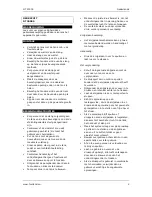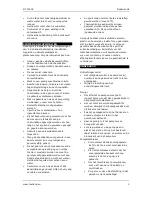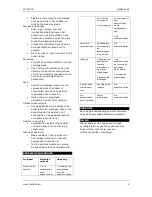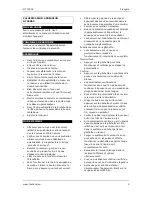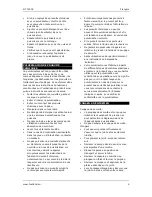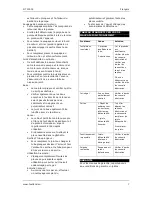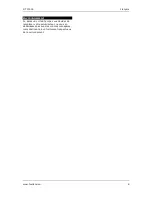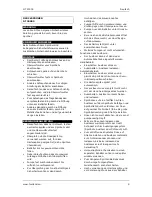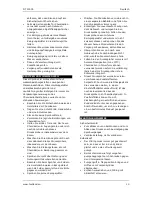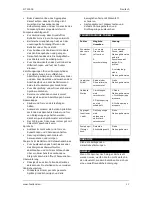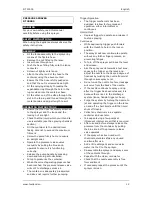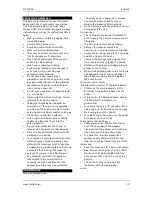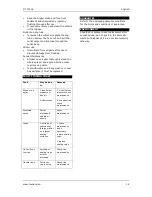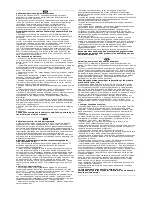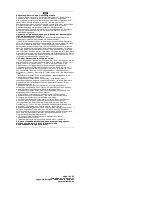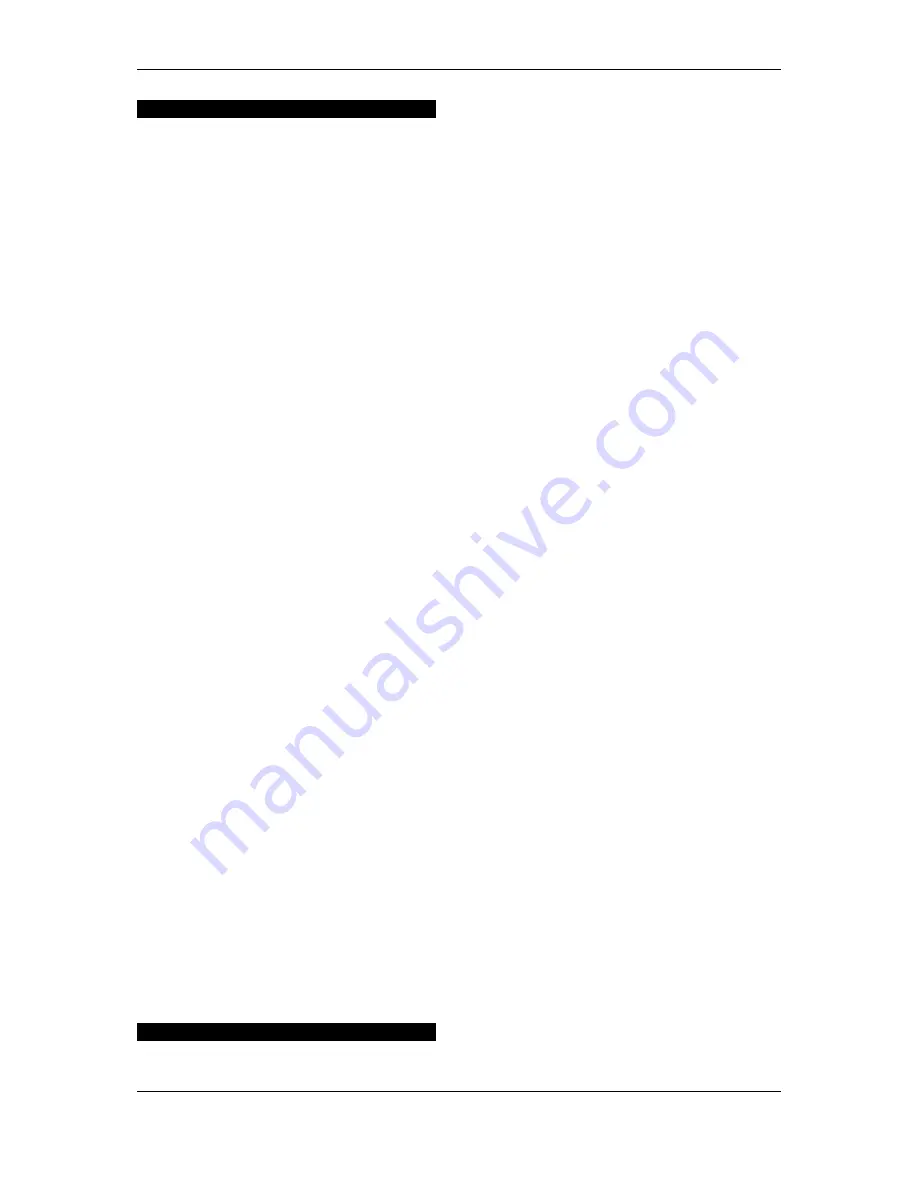
DT 20005
English
www.toolland.eu
13
SPRAYING CHEMICALS
This sprayer is intended for use with water
based solutions of proprietary insecticides,
fungicides, weed killers and follar feeds.
Always follow the chemical suppliers on-pack
instructions as well as the instructions listed
below.
Wear protective clothing, goggles, face
mask and gloves.
Avoid inhaling spray mist.
Avoid skin contact with chemicals.
Work in a well ventilated area.
Take care to protect children, pets and
fish from exposure to chemicals.
Wash hands thoroughly after use and
especially before eating.
Wash any contamined clothing.
Seek medical attention if spray gets in
your eyes or if you develop any
symptoms after spraying.
Do not spray near food or food
preparation areas. When spraying crops,
pay particular attention to the chemical
manufacturer’s advice on time before
crops can be eaten, etc.
Do not spray any solvent based material
e.g. white spirit.
Spray only thin watery solutions, thicker
mixtures will clog the nozzle.
Powdered chemicals can be sprayed
successfully if they are not completely
soluble and the solution tends to settle,
spraying can still be successful so long as
the mixture continually agitated.
If the material to be sprayed contains
sediment, strain the liquid into the
sprayer bottle.
Do not over-pressurize the bottle, or
tamper with the pressure release valve.
After use pay particular attention to the
paragraph on cleaning.
Your sprayer is manufactured from many
different types of plastic material, and
although the liquid you wish to use may
be packed in a plastic container, this is no
guarantee that it will not damage the
sprayer. If you are in any doubt about
any chemical you intend to spray we
recommend that you contact the
consumer service department at the
address given the check its suitability.
MAINTENANCE
Pressure release valve
The safety valve is designed to release
any excess pressure and to let you
release the pressure after spraying.
Do not interfere with the setting of the air
pressure safety valve.
Plunger head
The O-Ring should be kept lubricated to
slide freely in the barrel and so pump air
efficiently.
To apply grease proceeds as follows.
Remove the pumps assembly by
unscrewing in an anti-clockwise direction.
Locate the pump handle into the carrying
position and grip the barrel.
Unscrew the plunger retaining cap from
the pump barrel by rotating the handle.
Withdraw the plunger and apply silicone
grease to the O-Ring.
When re-assembling ensure the O-Ring is
not trapped between the outer edge of
the plunger moulding and the inside of
the pump barrel.
Pump non-return valve:
(Situated at the bottom of the pump barrel)
This stops the compressed air in the
container from escaping back into the
pump.
If it is faulty, the unlocked pump handle
will rise when the container is
pressurized.
To remove the valve, lift the edge of the
valve and pull. (take care not to damage
the sealing face of the barrel).
To replace place the valve over the centre
hole and push down firmly.
Pump barrel sealing rings
These make an air tight seal between
both the pump barrel and adapter.
Also between the adapter and container
when both are screwed down tight.
To check this, turn the pressurized
sprayer upside down and if there is a
leak, liquid will be forced from the joints.
Nozzle cap
Keep this clean and free from obstruction.
Also, the two swirl grooves at the end of
the lance must be kept clean and free
from sediment to ensure a good spray
pattern.
The nozzle O-Ring should be kept
lubricated with silicone grease.
Lance


